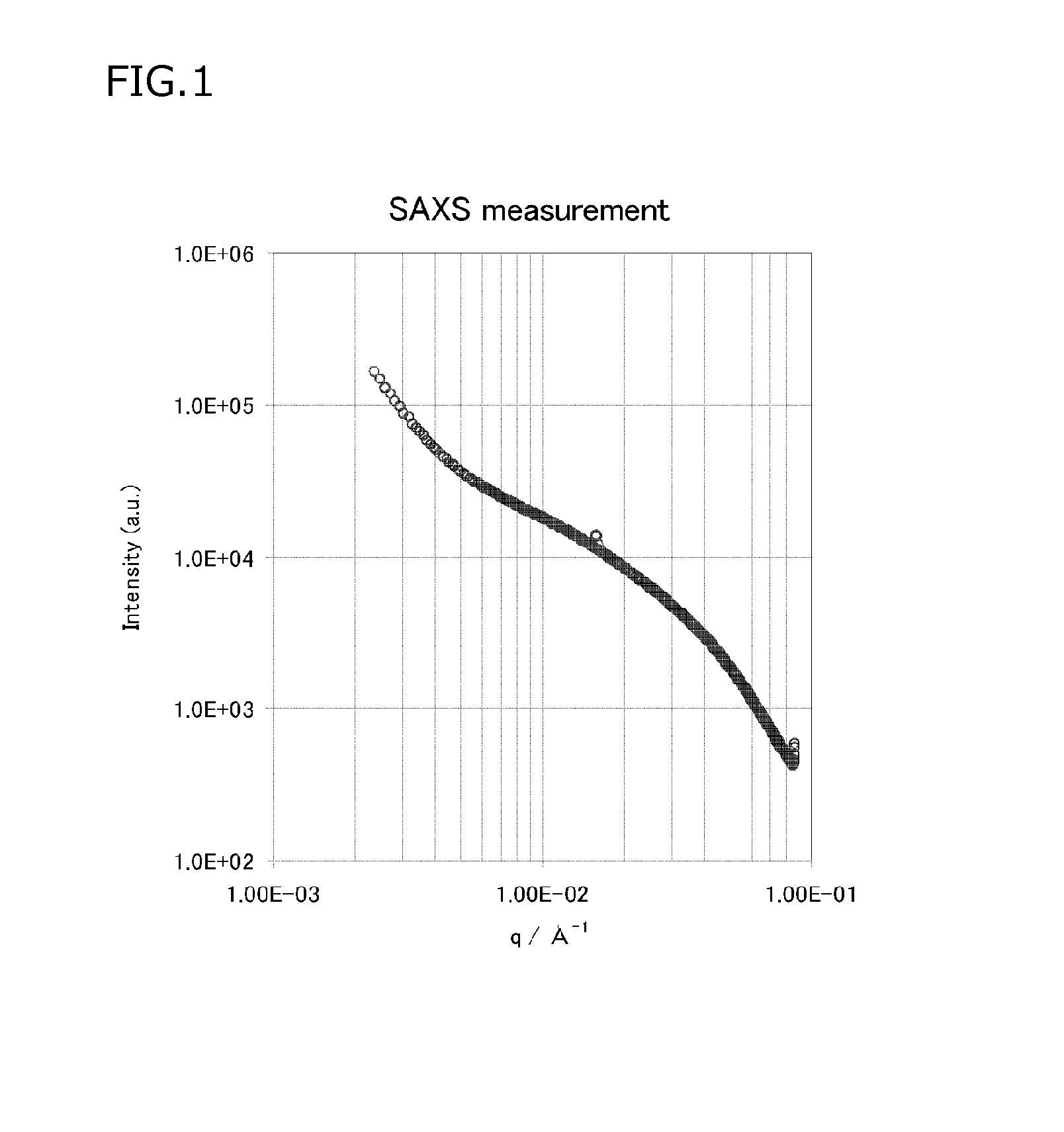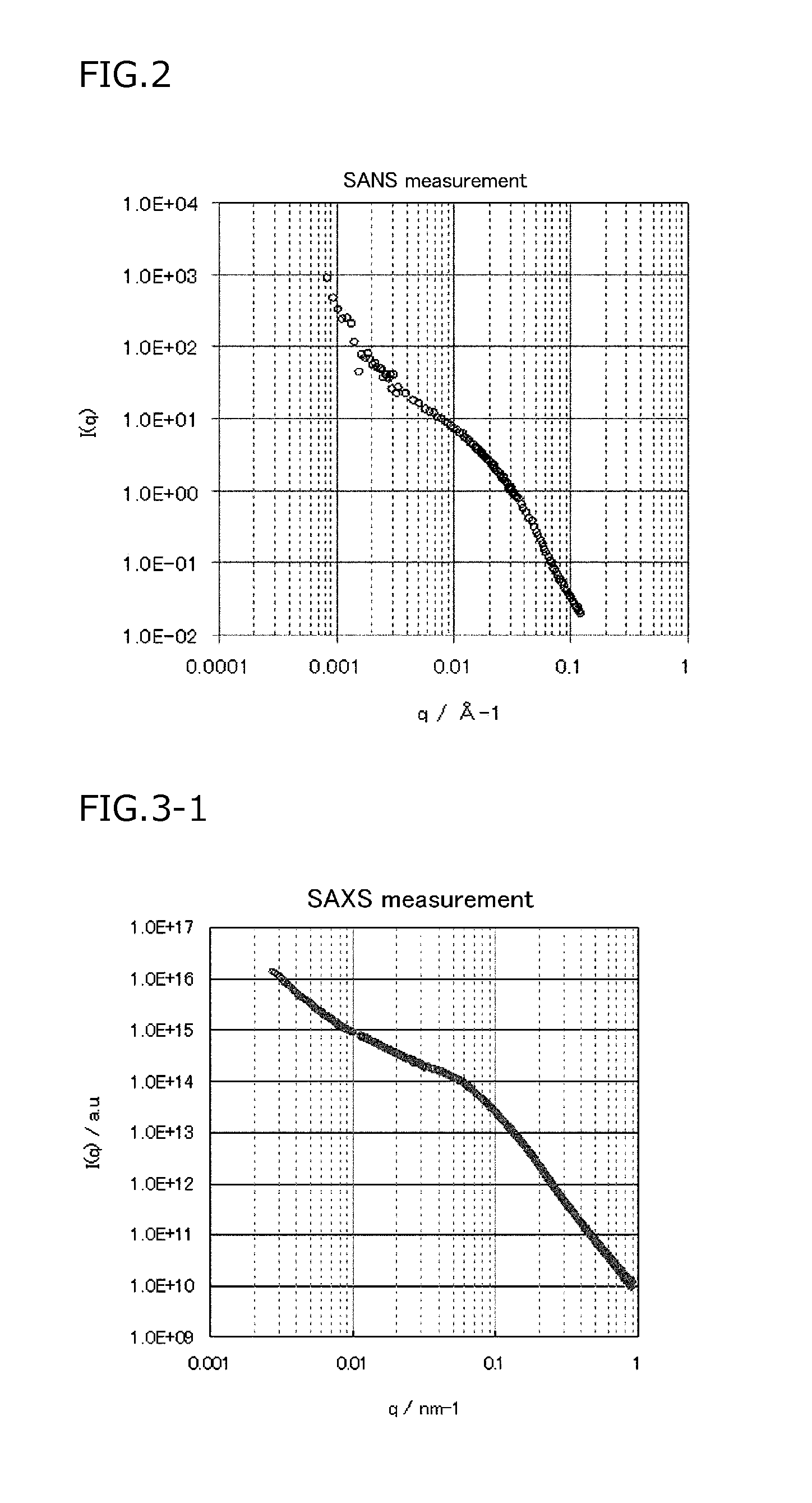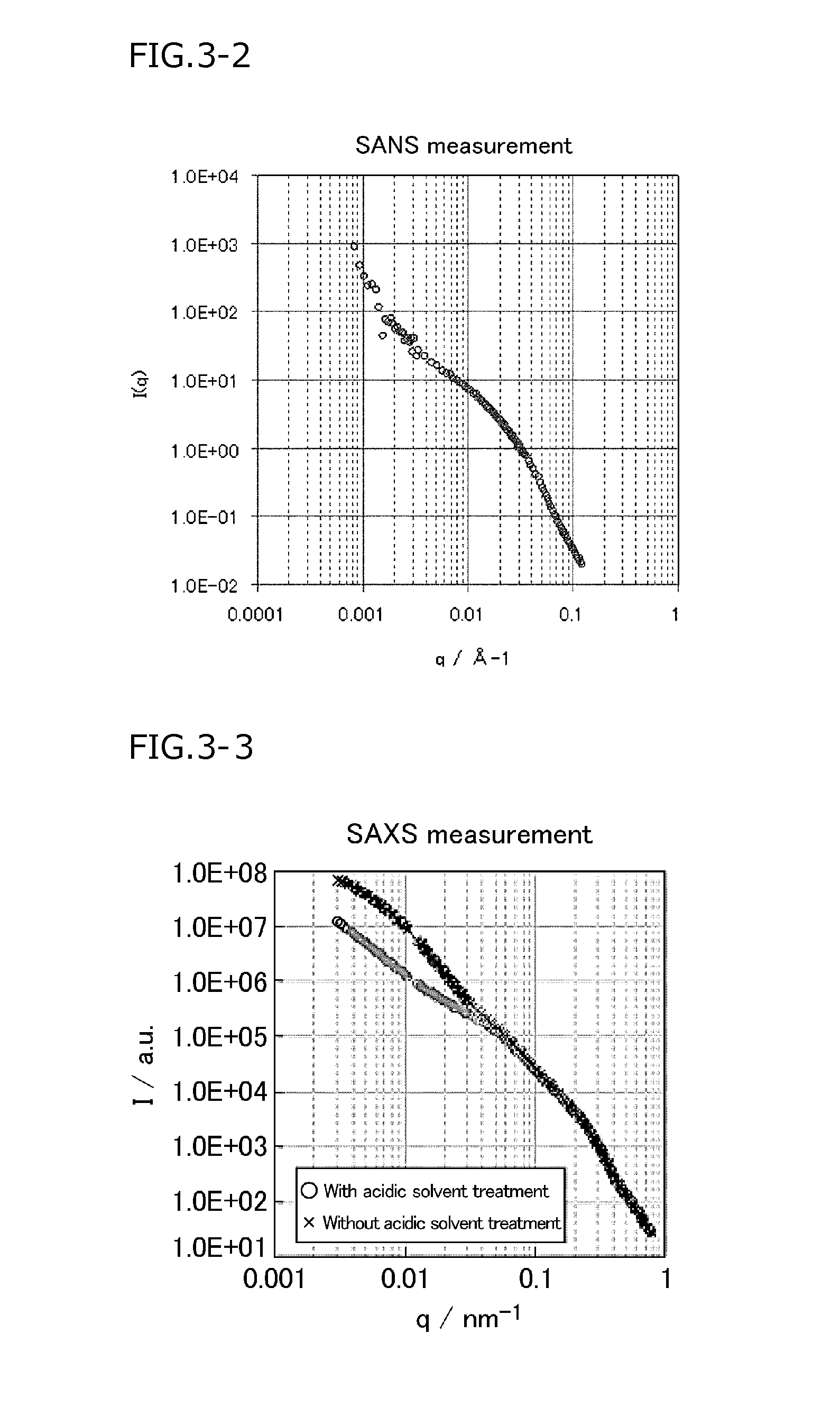Method for evaluating modulus of repulsion elasticity, hardness and energy loss of polymer material
- Summary
- Abstract
- Description
- Claims
- Application Information
AI Technical Summary
Benefits of technology
Problems solved by technology
Method used
Image
Examples
examples
[0113]The present invention will be more specifically described with reference to, but not limited to, examples.
[0114]The chemicals used in the examples and comparative examples are listed below.
(Reagents)
[0115]Cyclohexane: product of KANTO CHEMICAL CO., INC.
[0116]Pyrrolidine: product of KANTO CHEMICAL CO., INC.
[0117]Divinylbenzene: product of Sigma-Aldrich
[0118]n-Butyllithium 1.6 M in hexane: product of KANTO CHEMICAL CO., INC.
[0119]Isopropanol: product of KANTO CHEMICAL CO., INC.
[0120]Styrene: product of KANTO CHEMICAL CO., INC.
[0121]Butadiene: product of TAKACHIHO CHEMICAL INDUSTRIAL CO., LTD.
[0122]Tetramethylethylenediamine: product of KANTO CHEMICAL CO., INC.
Modifier: 3-(N,N-dimethylaminopropyl)trimethoxysilane (AZmax. Co)
[0123]NR: RSS #3
[0124]Silica: product on the market
[0125]Silane coupling agent: product on the market
[0126]Antioxidant: NOCRAC 6C(N-1,3-dimethylbutyl-N′-phenyl-p-phenylenediamine) (Ouchi Shinko Chemical Industrial Co., Ltd.)
[0127]Stearic acid:stearic acid (NOF...
examples 1-1 to 1-5
and Comparative Examples 1-1 to 1-5
Method for Preparing Molded Product
[0141]According to each of the compositions shown in Table 1, the materials were kneaded using a Banbury mixer and a roll kneader. Then, the kneaded mixture was press-molded at 170° C. for 20 minutes to provide a molded product.
[0142]The rebound resilience (SAXS measurement, metal-piece collision method) and the hardness of the molded products thus obtained were evaluated by the following test methods.
1-1. SAXS Measurement (Examples 1-1 to 1-5)
[0143]An about 1-mm-thick plate-like sample (molded product) was mounted on a sample holder, and the sample was irradiated with X-rays at room temperature. A scattering intensity curve I(q) obtained by SAXS measurement was curve fitted with the Formula 1-2 and Formula 1-3, and the fitting parameter Rg1 was then determined by least squares.
[0144]The measurement was repeated 10 times, and a CV (coefficient of variation) value was calculated based on the Rg1 values obtained. A ...
examples 2-1 to 2-4
and Comparative Examples 2-1 to 2-4
Method for Preparing Molded Product
[0154]According to each of the compositions shown in Table 2, the materials were kneaded using a Banbury mixer and a roll kneader. Then, the kneaded mixture was press-molded at 170° C. for 20 minutes to provide a molded product.
[0155]The hardness of the molded products thus obtained was evaluated by the following SANS measurement and durometer measurement. The results are shown below.
2-1. SANS Measurement (Examples 2-1 to 2-4)
[0156]An about 1-mm-thick plate-like sample (molded product) was swollen to equilibrium in deuterated toluene, and mounted on a sample holder, and the sample was then irradiated with neutrons at room temperature. Absolute scattering intensity curves obtained by measuring the sample at distances of 2.5 m and 10 m from the detector and with a focusing lens were combined by least squares. These three curves were combined as follows: the scattering intensity curve obtained by measuring the sample...
PUM
 Login to View More
Login to View More Abstract
Description
Claims
Application Information
 Login to View More
Login to View More - R&D
- Intellectual Property
- Life Sciences
- Materials
- Tech Scout
- Unparalleled Data Quality
- Higher Quality Content
- 60% Fewer Hallucinations
Browse by: Latest US Patents, China's latest patents, Technical Efficacy Thesaurus, Application Domain, Technology Topic, Popular Technical Reports.
© 2025 PatSnap. All rights reserved.Legal|Privacy policy|Modern Slavery Act Transparency Statement|Sitemap|About US| Contact US: help@patsnap.com



